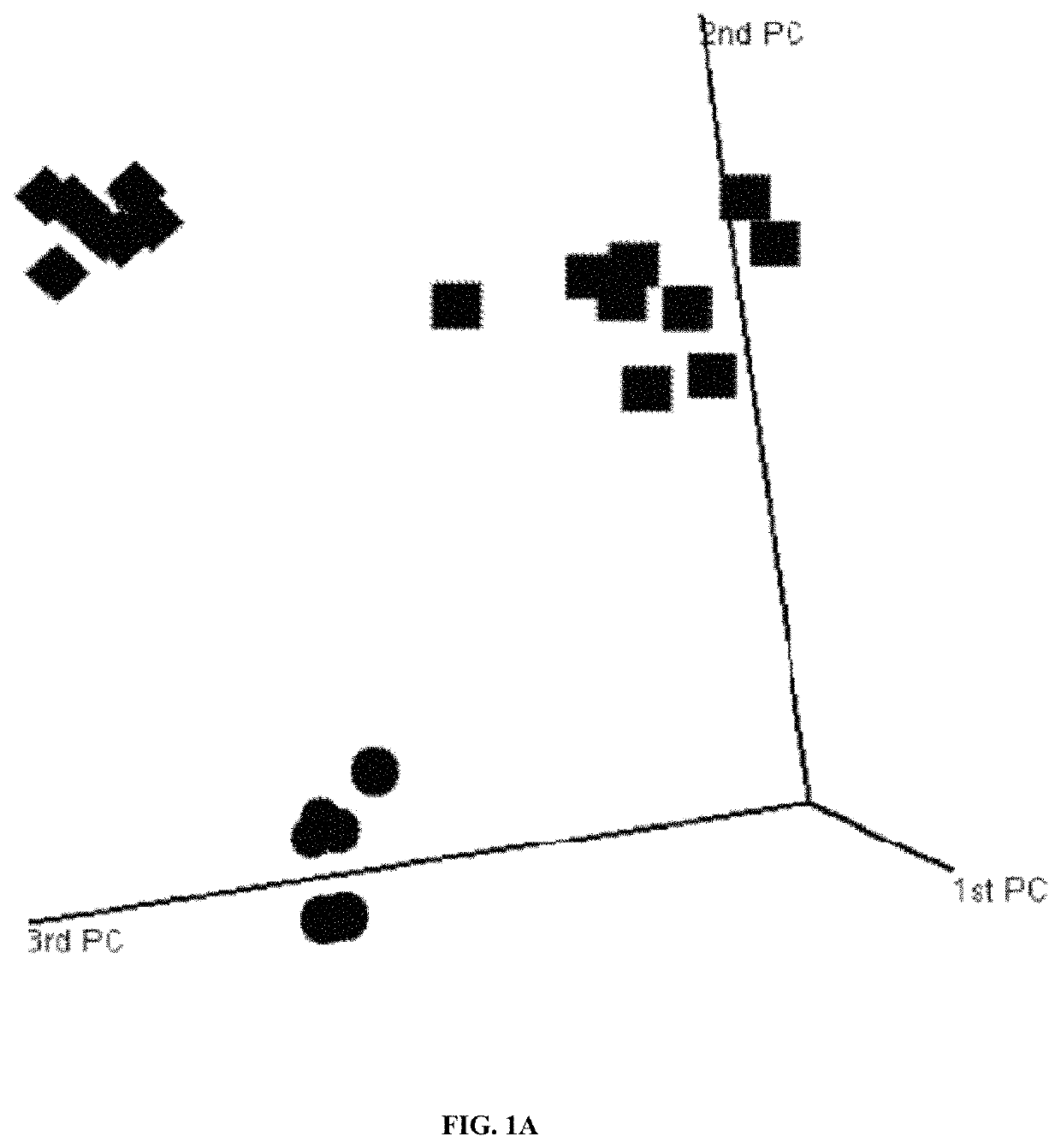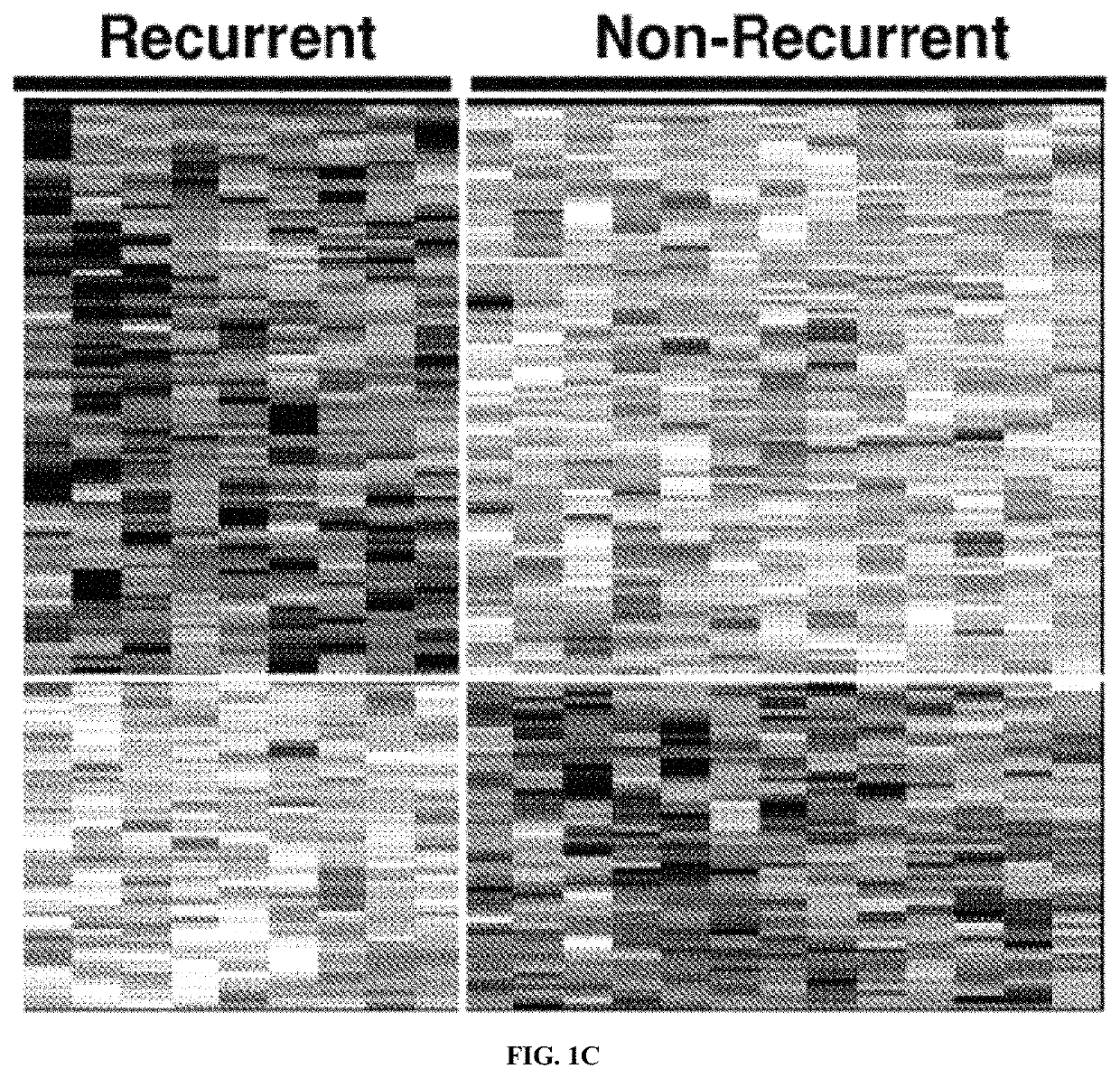Systems and methods for expression-based discrimination of distinct clinical disease states in prostate cancer
a prostate cancer and clinical disease technology, applied in the field of diagnostics, can solve the problems of unable to provide high-level accuracy for groups of patients with highly similar histological/pathological features or those at ‘intermediate’ risk of disease recurrence, and difficulty in identifying a robust and reproducible disease signatur
- Summary
- Abstract
- Description
- Claims
- Application Information
AI Technical Summary
Benefits of technology
Problems solved by technology
Method used
Image
Examples
example 1
Identification of Target Sequences Differentially Expressed in Prostate Disease States
[0240]Tissue Samples. Formalin-fixed paraffin embedded (FFPE) samples of human prostate adenocarcinoma prostatectomies were collected from patients at the Mayo Clinic Comprehensive Cancer Center according to an institutional review board-approved protocol and stored in the Department of Pathology for up to 20 years. For each patient sample four 4 micron sections were cut from formalin-fixed paraffin embedded blocks. Pathological review of FFPE tissue sections was used to guide macrodissection of tumor and surrounding normal tissue. Patients were classified into one of three clinical disease states; no evidence of disease (NED, n=10) for those patients with no biochemical or other clinical signs of disease progression (at least 10 years follow-up); prostate-specific antigen biochemical recurrence (PSA, n=10) for those patients with two successive increases in PSA measurements above an established cu...
PUM
| Property | Measurement | Unit |
|---|---|---|
| Level | aaaaa | aaaaa |
Abstract
Description
Claims
Application Information
 Login to View More
Login to View More - R&D
- Intellectual Property
- Life Sciences
- Materials
- Tech Scout
- Unparalleled Data Quality
- Higher Quality Content
- 60% Fewer Hallucinations
Browse by: Latest US Patents, China's latest patents, Technical Efficacy Thesaurus, Application Domain, Technology Topic, Popular Technical Reports.
© 2025 PatSnap. All rights reserved.Legal|Privacy policy|Modern Slavery Act Transparency Statement|Sitemap|About US| Contact US: help@patsnap.com



